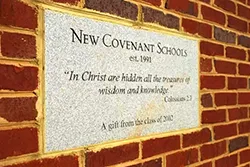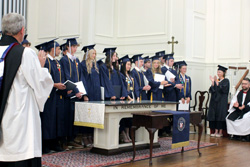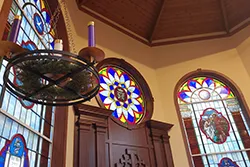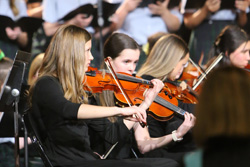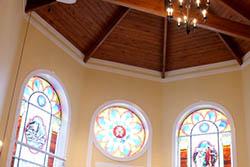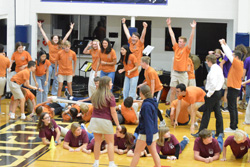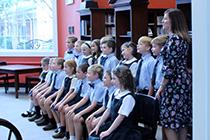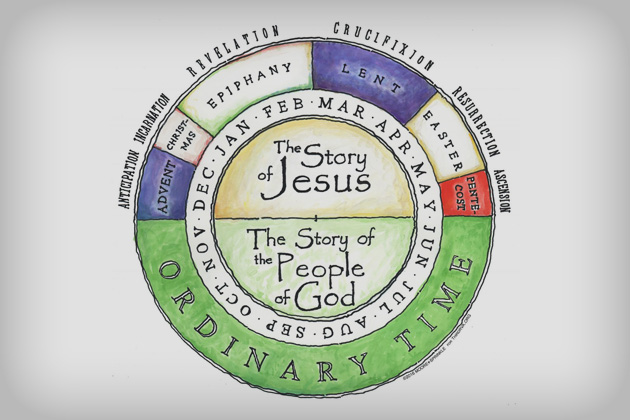One of the pleasant aspects of the work in which teachers and students engage is the rhythm of the academic calendar. Just a few months ago we returned to school full of optimism and hope for the new year. It wasn’t a new year as in January 1st, and we didn’t greet each other on the first day of school with “Happy New Year!” It was a new year nonetheless. We worked hard to fall break, then Thanksgiving, and soon enough, we’ll get to Christmas break. As the school winds down each spring, teachers look forward to a summer break, and nothing brings smiles to students faces more than the words, “Summer vacation!” The alternating seasons of work and rest, effort and relaxation, combine to consolidate what we have studied and learned.
Our lives are ordered by calendars. There is the civil calendar with all of its attendant holidays like the Fourth of July, Labor Day and the rest. There is the school calendar that we publish a year ahead of time. There’s football season, basketball season—pick your sport and there’s a calendar for it. Each one has a formative effect upon us, telling us it’s time to anticipate good times, rituals of BBQs, tailgating, or hanging out with friends on the soccer field.
And then—wait for it—there is the Church calendar, the one with which we might be the least familiar, but which, in our tradition, is supremely important. Unfamiliar to many, this last calendar invites us to track the time of our lives with something entirely different. It teaches us when to be expectant, when to be happy, when to be reflective, when to enter into sorrow, and when to be jubilant. This calendar tracks time by recapitulating the life of our Lord, and as such it is an ancient practice important for the formation of faith.
And it is ancient. Since the very formation of God’s people in the Old Testament, a detailed calendar was imposed by God himself so that his people would remember what he did in history, past time, the events of which were to be formative going forward in time: Passover, the Exodus, the giving of the Law, Pentecost and Tabernacles, just to name the major ones. That calendar was so extensive that in a seven-year block of time the festival days or feasts were so numerous that the Hebrews effectively enjoyed a four-day work week (I’ve done the math).
We’re getting ready to begin the “new year” this coming Sunday, the fourth Sunday before Christmas. I know the school is already “greened,” as are some of your churches, but it’s not Christmas yet. The four weeks leading up to the twelve-day feast of Christ’s nativity are set aside to prepare for it. Each of these four weeks will take up a special theme and, taken together, they serve a particular function. The month leading to Christmas Eve is designed to place us—liturgically speaking—into the same historical space our fathers occupied before Messiah came. Sure, we know the whole story already, but the function of the calendar is to recapitulate the world which lay in exile with the Jews before the first Advent of Jesus. We can’t go back in time, but the calendar invites us to enter into that world of expectation by consciously re-imagining what that world was like.
This year, I am writing a blog which will begin next week, and which will detail the Church calendar for you. It so happens that the significant events of Jesus’ life are all completed during the span of the academic year. Watch your Quid Novi for a short summary each week with a link to my blog for a detailed explanation of what’s going on in the Church calendar. Get ready! It could be the time of your life!

